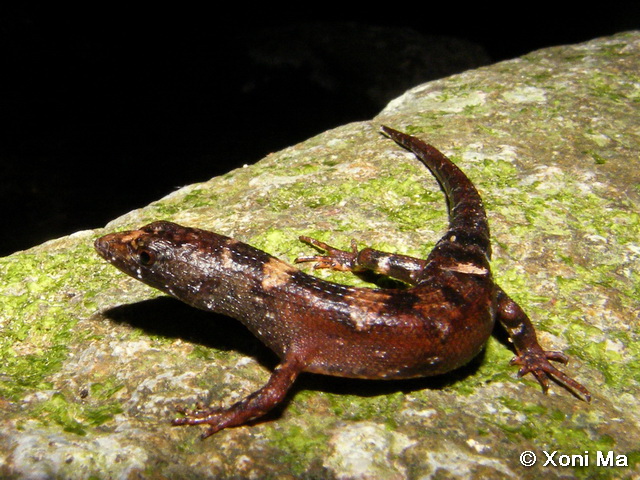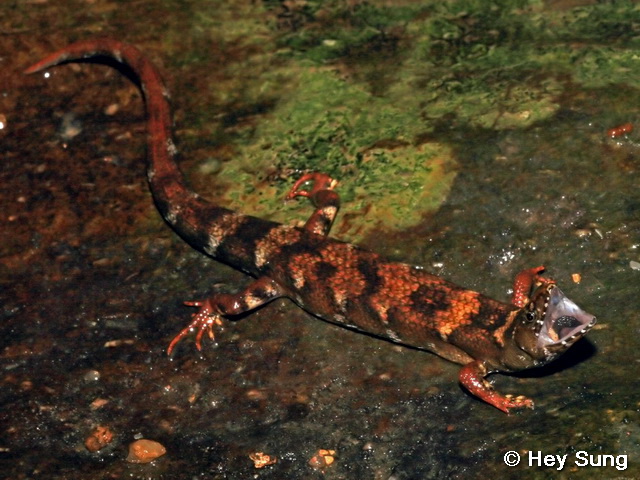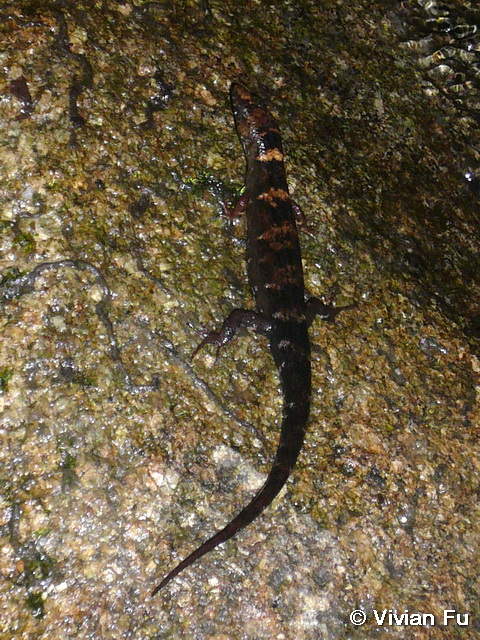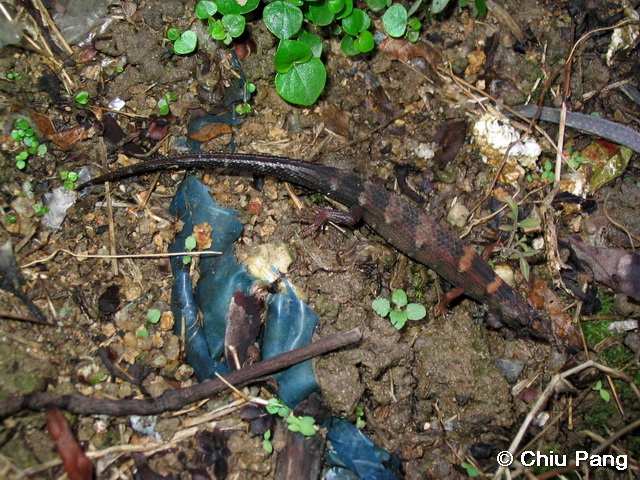Tropidophorus sinicus (Boettger, 1886)
Chinese Waterside Skink 棱蜥
Suborder
Lacertilia 蜥蜴亞目
Body quite stout. Underside of body orange-yellow.
Head narrow and pointed. Labials black, with a few white flecks.
Tail thick, muscular and somewhat laterally compressed to aid in swimming.
Females larger than males. Young with whitish bars on the back and yellowish-white belly.
All scales roughly keeled except ventral scales.
Usually found close to streams, especially clear, rocky mountain streams that either have wooded margins or flow through dense forest.
During the day is found under stones, rotting logs or boards in or near streams.
Termites often congregate under such cover and are an important food source.
When uncovered and disturbed, darts quickly under another rock, or dives into the water and hides under rocks at the bottom.
Tail not as fragile as that of other skinks.
In captivity also feed on small lizards.
Female does not feed for several weeks prior to giving birth; resumes feeding after the young are born.
Less common on Lantau and Hong Kong islands.
Is known from Guangxi and Guangdong provinces in China, and from Vietnam.



